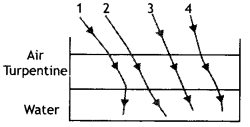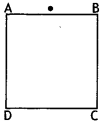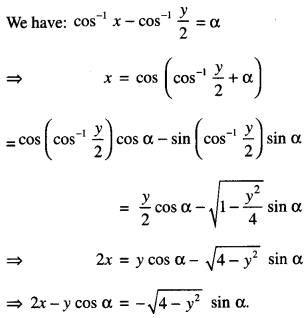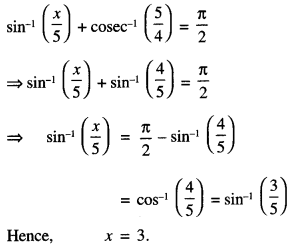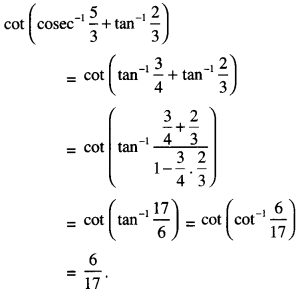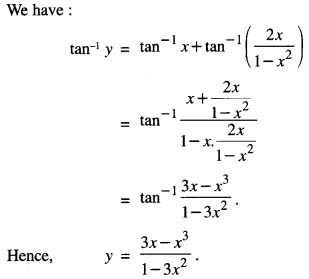The Patriot Summary by Robert Browning
Treasure Trove Poems and Short Stories Workbook Answers
The Patriot Summary by Robert Browning
The Patriot Summary About the Poet
Robert Browning (7 May, 1812 – 12 Dec., 1889), an eminent Victorian era poet and playwright, was considered to be the master of dramatic monologues. Browning’s masterpieces include, ‘Porphyria’s Lover1, ‘Andrea del Sarto’, My Last Duchess’, ‘The Last Right Togethef etc. Preoccupation with the inward, psychological drama of his characters is what makes Browning famous for his characterization as a poet as well as a playwright. He was married to poet, Elizabeth Barrett Browning.
The Patriot Summary
This poem is about a man, a political leader, who was once regarded and glorified as a hero by the people but later misunderstood and killed by the same people considering him a criminal. But the poet also shows the man’s deep hope and faith in God. He believes that, though the people considered him wrong, God will surely give appropriate judgement and he shall be much safer in heaven.
The Patriot Explanation of the Poem
Stanza 1. “It was roses, roses, all the way,
With myrtle mixed in my path like mad:
The house-roofs seemed to heave and sway,
The church-spires flamed, such flags they had,
A year ago on this very day.”
Explanation: In the first stanza, the poet says that just a year ago when he had entered the city, people welcomed him joyfully and decorated his path with roses and myrtles. They crowded on their roof-tops to have his glimpse. The minarets and domes of the churches shone with fiery coloured flags. The political leader thus, received a grand public welcome when he came into power a year ago.
Word Meanings:
1. Myrtle – Shrub with sweet smelling white or pink flowers
2. Heave – To swell or rise
3. Sway – Move back and forth
4: Church-spires – Church tower
Stanza 2. “The air broke into a mist with bells,
The old walls rocked with the crowd and cries.
Had I said, “Good folk, mere noise repels.
But give me your sun from younger skies!”
They had answered, “And afterward, what else?”
Explanation: The poet further describes the festive environment. The air was filled with the resounding of the bells and the old walls swayed due to the loud cries of the people who had gathered to watch their great leader who had brought laurels to their nation. The patriot tells the people that instead of the noise that seems to be repelling and also temporary, if they loved him, they should get the sun from the skies for him, which was the symbol of permanence and power. At that time, the crowd that was extremely zealous, asks him what else would he require, other than the sun. They were ready to fulfill any of his demand.
Word Meanings:
l. Mist – Light fog
2. Rocked – Shook
3. Repels – Repulse, discourage
4. Yonder – Over there
Stanza 3. “Alack, it was I who leaped at the sun
To give it my loving friends to keep!
Nought ‘man could do, have I left undone:
And you see my harvest, what I reap
This very day, now a year is run.”
Explanation: This stanza illustrates a sudden transition of the man from a leader to a traitor in the eyes of the same ‘ people. He realizes that he had been over-ambitious and over-confident as he tried to get the sun to gift to his loving people. He tried to accomplish the impossible for them. But he is disappointed and regretful to see the result presently just after a lapse of one year.
Word Meanings :
1. Alack – Used to express sorrow or regret
2. Leaped – To jump over, to move quickly
3. Nought – None
Stanza 4. “This very day, now a year is run.
There’s nobody on the house-tops now
Just a palsied few at the windows set;
For the best of the sight is, all allow,
At the Shambles’ Gate., or, better yet,
By the very scaffold’s foot, I trow.”
Explanation: Here the poet remarks that the same patriot who was once welcomed with open hearts and hands, is branded as a traitor by the same people and is being taken for execution. The house-tops which were once over-crowded with overwhelming excitement to watch him, are now empty. Only a few paralysed ones are standing at the windows watching him march towards death. The rest are assembled at the slaughter¬house, for the best sight will be there, where this man will be hanged to death.
Word Meanings :
1. Palsied – Paralysed
2. Shambles gate – Slaughter house
3. Scaffold – A platform on which criminals are killed by being hanged or beheaded.
Stanza 5. “I go in the rain, more than needs,
A rope cuts both my wrists behind;
And I think, by the feel, my forehead bleeds,
For they fling, whoever has a mind,
Stones at me for my year’s misdeeds.”
Explanation: Here the poet draws the imagery of the patriot, now a convict, walking in the rain towards the scaffold. His hands are tied at the back, the tight rope making wounds in his wrists. He suffers injuries as the people hit him with stones. He can feel the blood dripping down his forehead Tt is highly ironical that the hands which welcomed him once with roses are now pelting stones at him. And more interestingly he says that, these were people with brains, who judged him for his year’s misdeeds.
Word Meanings :
1. Fling – To throw or push forcefully.
2. Misdeeds – A morally wrong or illegal act.
Stanza 6. “Thus I entered, and thus I go!
In triumphs, people have dropped down dead.
Paid by the world, what dost thou owe
“Me?”—God might question; now instead,
‘Tis God shall repay: I am safer so.”
Explanation: The concluding stanza ends on an optimistic note. The leader says that he traveled the same path when he entered the town and when he is leaving the town as well as the world. A public hero, once upheld w-ith great pomp and shows, now suffers utter humiliation and his life approaches an unexpected climax. The speaker discusses his religious belief, his meeting with God after death. He says that he will tell God that he did the best possible for his people, yet they misunderstood him and treated him shamefully.
He believes in God’s justice. God will understand that he has already been punished on the earth for his misdeeds, and he will give the man the best reward in his world for his services. Thus, he will completely surrender to God and feel content and safe with Him ever after.
Word Meaning :
1. Triumphs – A great success or achievement
The Patriot Summary Questions and Answers
Question 1.
Read the extract given below and answer the questions that follow :
It was roses, roses, all the way,
With myrtle mixed in my path like mad:
The house-roofs seemed to heave and sway,
The church-spires flamed, such flags they had,
A year ago on this very day.
The air broke into a mist with bells,
The old walls rocked with the crowd and cries.
Had I said, “Good folk, mere noise repels.
But give me your sun from younger skies!”
They had answered, “And afterward, what else?”
(i) What kind of reception does the patriot receive one year ago?
(ii) Describe the atmosphere of joy and triumph.
(iii) How does the patriot prove that the people’s love for him was beyond limit?
(iv) Explain the meaning of- (a) heave and sway (b) air broke into a mist
(v) Why do you think the patriot is thinking of asking for the sun?
Answer:
(i) One year ago the patriot received a grand reception. His walking path was paved with numerous rose petals with myrtle flowers mixed with it. The housetops were crowded with people and they were moving and swinging like mad people. The minarets and domes of churches were shining with light. They were decorated with colourful flags.
(ii) The people welcomed the patriot with so much happiness and excitement, that their voices mingled with one another and produced a sort of music. The air became misty and saturated because of the loud slogans and the ringing bells. The walls of the road-side houses trembled due to such a loud noise.
(iii) The patriot tells that the people held him in such high esteem that had he asked them for anything, may be the sun, on which their life depended, they would have readily agreed and asked him what else they could do for him.
(iv) (a) So many people had crowded over the roofs of houses that the roofs seem to be swinging due to the load, (b) The air seemed misty with the sounds of the bell that were ringing everywhere.
(v) The patriot says that he tells the people he doesn’t want cheers and applause as the extravagant celebrations will fade away with time. He wants power and glory like the sun, he wants to st.ay immortal in the heart of his people so he thinks of asking for the sun, which is the symbol of ultimate power and eminence.
Question 2.
Read the extract given below and answer the questions that follow :
Alack, it was I who leaped at the sun
To give it my loving friends to keep!
Nought man could do, have I left undone:
And you see my harvest, what I reap
This very day, now a year is run.
There’s nobody on the house-tops now
Just a palsied few at the windows set;
For the best of the sight is, all allow,
At the Shambles’ Gate., or, better yet,
By the very scaffold’s foot, I trow.
(i) How does the patriot reciprocate the love of his people?
What does the word ‘Alack’ signify?
(ii) What is the difference between what happened one year ago and the present day? Why?
(iii) Where does he expect the people to be? Why?
(iv) Give meaning of –
(a) Palsied (b) Shambles gate
(v) What kind of impression of the people is formed here?
Answer:
(i) The people loved and trusted the patriot so much that they were instantly ready to fetch the sun for him. But he loved his people so much that it was he who leaped for it and presented it to them, i.e., he did the impossible, what no man could do.
The word ‘Alack’ shows a tone of regret. He says with great sorrow that only one year has lapsed and what reward is he getting for his great accomplishments and deeds.
(ii) It has been just one year, the Patriot is being lead on the same path, but unlike then, the roof-tops are empty, no cheering, no rejoicing and only a few paralysed ones are gazing from the windows.
The reason is that, a year ago, he was welcomed as a hero, a Patriot, and now he has been branded as a traitor by the people of his nation.
(iii) The people would have gathered at the Shamble’s Gate; the gate of the slaughter house or at the foot of the scaffold.
The reason was that the speaker who was once held as a Patriot has now been convicted for his supposed misdeeds and is being taken to the gallows to be punished. The people have assembled there to see him die.
(iv) (a) Paralysed due to a disease called palsy and marked by uncontrollable tremor of the body or any part.
(b) A place where people assemble to witness public hangings.
(v) As per the speaker, the people’s fickle mindedness is highlighted here. The same people, just a year ago were filled with exuberance for the same person. He says he had left no stone unturned for them but they misunderstood him and now they are waiting for the best of the sight i.e., his hanging. It is all the reward of his good deeds, which have been misunderstood.
Question 3.
Read the extract given below and answer the questions that follow ;
I go in the rain, more than needs,
A rope its both my wrists behind;
And I think, by the feel, my forehead bleeds,
For fling, whoever has a mind,
Stones at me for my year’s misdeeds.
Thus I entered, and thus I go!
In triumphs, people have dropped down dead.
Paid by the world, what dost thou owe
“Me?”—God might question; now instead,
‘Tis God shall repay: I am safer so.
(i) Explain the humiliation the patriot is made to undergo.
(ii) Why does the poet say, “whoever has a mind?”
(iii) What does the speaker say about his entry and exit? Explain ‘In triumphs, people have dropped down dead.’
(iv) Give the meaning of-
(a) Misdeeds (b) Triumphs
(v) Why does the speaker say he will feel safer in God’s hands? What does this reflect about the speaker’s character?
Answer:
(i) The speaker highlights his sad condition. He says that people are carrying him to the gallows in the rain. They have unnecessarily tied his hands behind his back with a tight rope, which is, cutting his both hands at wrists. The supposed culprit i.e., the speaker feels his forehead is bleeding because people are petting stones at him.
(ii) The speaker says that those who had mind were throwing stones at him, which means that probably they were those with some sort of understanding, whether right or wrong, or some passion. The others were merely idle and ignorant ones and had collected there as dormant spectators.
(iii) In the concluding stanza the speaker speaks about his entry and exit from the life of power and glory. He says he is leaving the same way as he entered. He walks down towards his death through the same streets on which he had entered the town and was hailed as a hero.
This line means that, some people die from doing good things. He is victorious even in his defeat. Here we find an optimistic view of the speaker. He says, sometimes great heroes fall from their climax and die. The most highly held, the most loved, also lose their charm and glory in the eyes of people and suffer such an end.
(iv) (a) Wrong deed, offense
(b) Great success or achievement
(v) The speaker shows his complete trust in God. He believes that, after enduring so much insult from the people on Earth, he will be received by God lovingly for the services he has given to his nation. He feels safe in Heaven because he knows morally he has done right and God will reward him for his deeds, as God is just. This reflects that the speaker is an optimistic man with a religious bent. He has complete faith in God’s love and justice.
